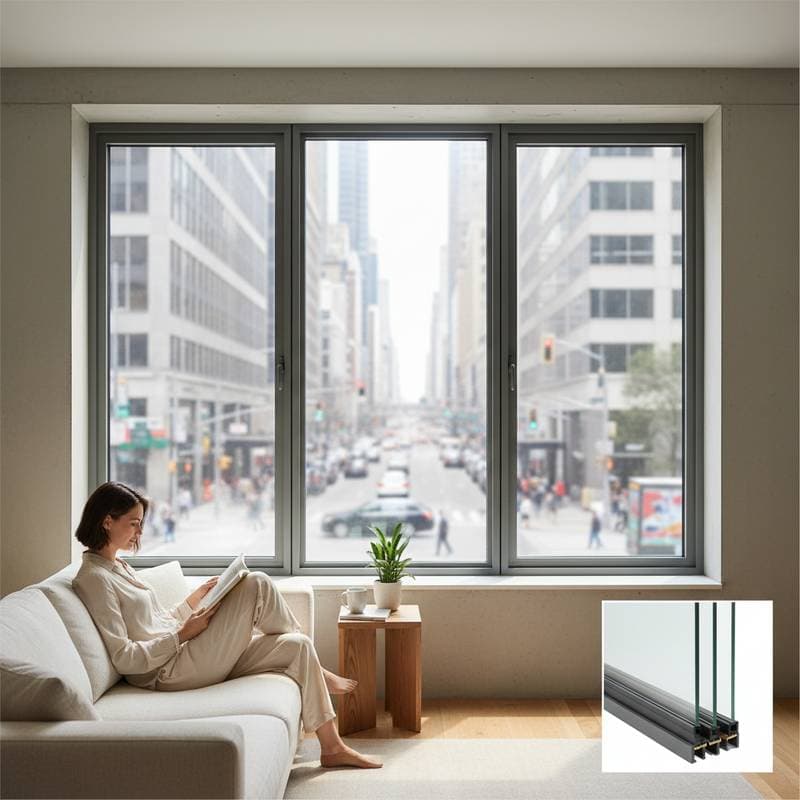Experience Up to 85% Noise Reduction with Acoustic Windows
Noise pollution affects many homeowners near busy roads, airports, or urban areas. Traffic, construction, or daily neighborhood sounds often interrupt sleep, focus, and relaxation. Acoustic windows address this issue effectively by blocking up to 85 percent of sound transmission. Homeowners benefit from understanding the mechanics, pricing, and installation process of these windows.
Average Cost of Acoustic Windows
Costs for acoustic windows depend on factors such as window size, frame material, and level of soundproofing. Homeowners typically pay between $900 and $1,800 per window, which covers professional installation. Standard double-pane options with acoustic glass fall on the lower end, while custom or triple-pane designs increase the expense.
| Type of Acoustic Window | Average Cost (Installed) | Noise Reduction Level | Common Applications |
|---|---|---|---|
| Double-pane laminated glass | $700 to $1,100 | 50% to 65% | Bedrooms, offices, living rooms |
| Triple-pane laminated glass | $1,200 to $1,800 | 70% to 85% | Homes near airports or highways |
| Secondary glazing system | $400 to $900 | 45% to 60% | Apartments, historic homes |
| Custom acoustic glass units | $1,500 to $2,500 | Up to 85% | Luxury or high-rise properties |
These figures account for labor, materials, and proper sealing. Vinyl frames provide the most budget-friendly choice, whereas fiberglass or aluminum-clad wood frames enhance insulation and visual appeal. Select materials based on your climate and design preferences to optimize both performance and longevity.
Understanding Sound Transmission Class (STC) Ratings
Experts measure the sound-blocking ability of windows through the Sound Transmission Class (STC) rating system. Higher ratings indicate superior insulation against noise. This metric helps homeowners select options suited to their specific environment.
| STC Rating | Typical Window Type | Noise Reduction Description |
|---|---|---|
| 25 to 30 | Standard single-pane | Minimal sound reduction |
| 30 to 35 | Basic double-pane | Noticeable reduction in speech and outdoor noise |
| 36 to 40 | Standard acoustic window | Substantial noise reduction for most homes |
| 41 to 50+ | Premium laminated or triple-pane acoustic window | Excellent noise suppression, ideal for urban or high-traffic areas |
Aim for an STC rating of 40 or above to achieve significant noise control. Such windows typically block 80 to 85 percent of sound, though results vary with factors like wall construction and external noise frequency. Consult a professional to assess your home's needs accurately.
Comparing Acoustic Windows to Other Noise Reduction Methods
Before committing to new windows, some homeowners consider simpler alternatives for noise control. These methods offer varying degrees of relief but often fall short of comprehensive solutions. Acoustic windows stand out for their durability and effectiveness.
| Noise Reduction Method | Average Cost | Noise Reduction Effectiveness | Best Use Case |
|---|---|---|---|
| Weatherstripping and caulking | $50 to $200 per window | 10% to 20% | Minor air leak sealing |
| Soundproof curtains | $100 to $400 per window | 15% to 35% | Temporary or partial noise control |
| Interior window inserts | $300 to $800 per window | 40% to 55% | Apartments or rental units |
| Acoustic window replacement | $900 to $1,800 per window | Up to 85% | Long-term, full-home solution |
Curtains and inserts provide convenient, short-term fixes, yet they fail to seal sound leaks at the glass and frame level. In comparison, full acoustic window replacements deliver reliable, permanent results. Evaluate your situation to determine the most practical approach.
Maintenance and Longevity
Acoustic windows demand little upkeep, focusing on routine cleaning and checks. Proper care ensures they maintain performance over time. Follow these steps to preserve their condition.
- Use a mild glass cleaner and soft cloth for surfaces to prevent scratches on laminated layers.
- Inspect seals yearly for cracks or gaps that could compromise soundproofing.
- Lubricate hinges and locks regularly to keep operations smooth.
- Refinish wood frames as needed to guard against moisture.
With consistent maintenance, these windows endure for 20 years or longer. They also contribute to energy efficiency by reducing drafts, lowering utility costs throughout their service life.
When to Consider Replacement
Upgrading makes sense if current windows allow excessive noise entry or show signs of wear. Single-pane or aging double-pane units often fail to insulate adequately. Look for these indicators to decide on replacement.
- Audible street or traffic noise indoors with windows closed.
- Disrupted sleep or productivity due to external sounds.
- Condensation forming between glass panes.
- Drafts or gaps visible at frame edges.
Switching to acoustic models not only quiets the home but also boosts property value. The investment yields quick returns in comfort and efficiency.
Expert Insights on Choosing the Right Acoustic Windows
Selection of acoustic windows hinges on location, budget, and noise type. Tailor choices to match your circumstances for optimal results.
Laura Chen, project manager at Quiet Home Installations, advises: "The first step is identifying the type of noise you want to block. Low-frequency sounds like heavy traffic need thicker or laminated glass, while high-frequency sounds such as voices or music respond well to multi-pane designs."
For properties near highways or airports, opt for triple-pane laminated units with STC ratings exceeding 45. In less intense settings, double-pane laminated glass often suffices. Discuss options with specialists to align with your goals.
Steps to Upgrade Your Windows
Transitioning to acoustic windows enhances daily living by minimizing disturbances. Start by gathering quotes from three or more licensed contractors. Compare details on pricing, materials, and warranty coverage.
This upgrade serves as a worthwhile investment, alleviating stress and promoting focus. Proper installation and ongoing care ensure sustained tranquility and efficiency across your living spaces.






